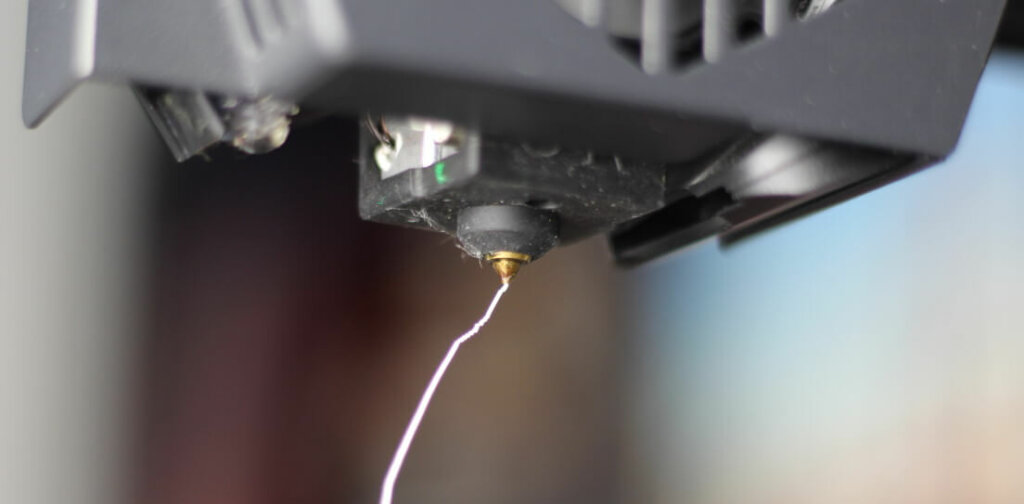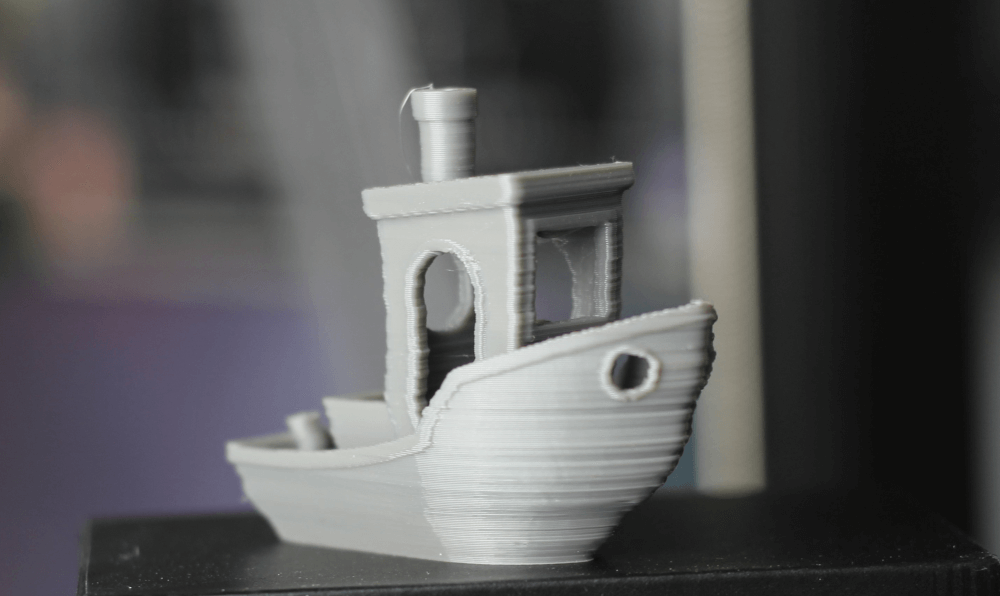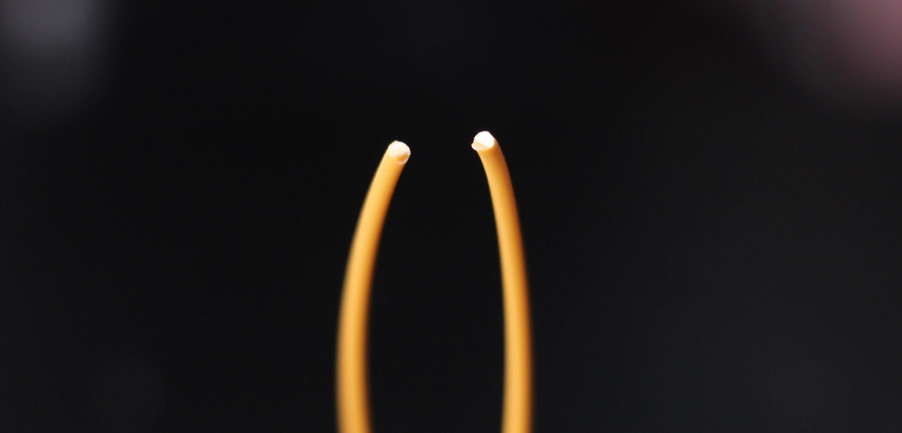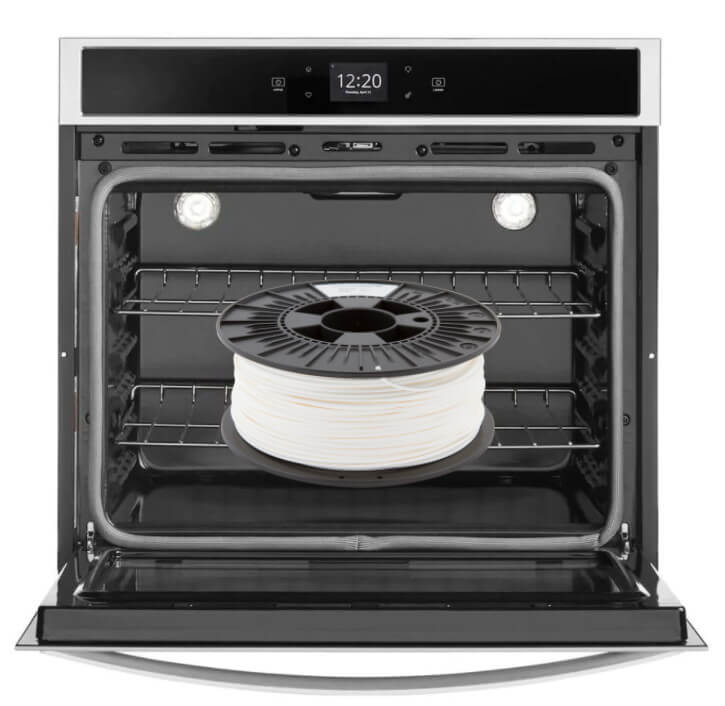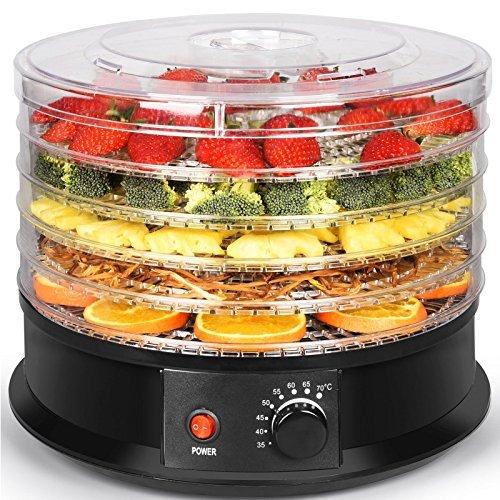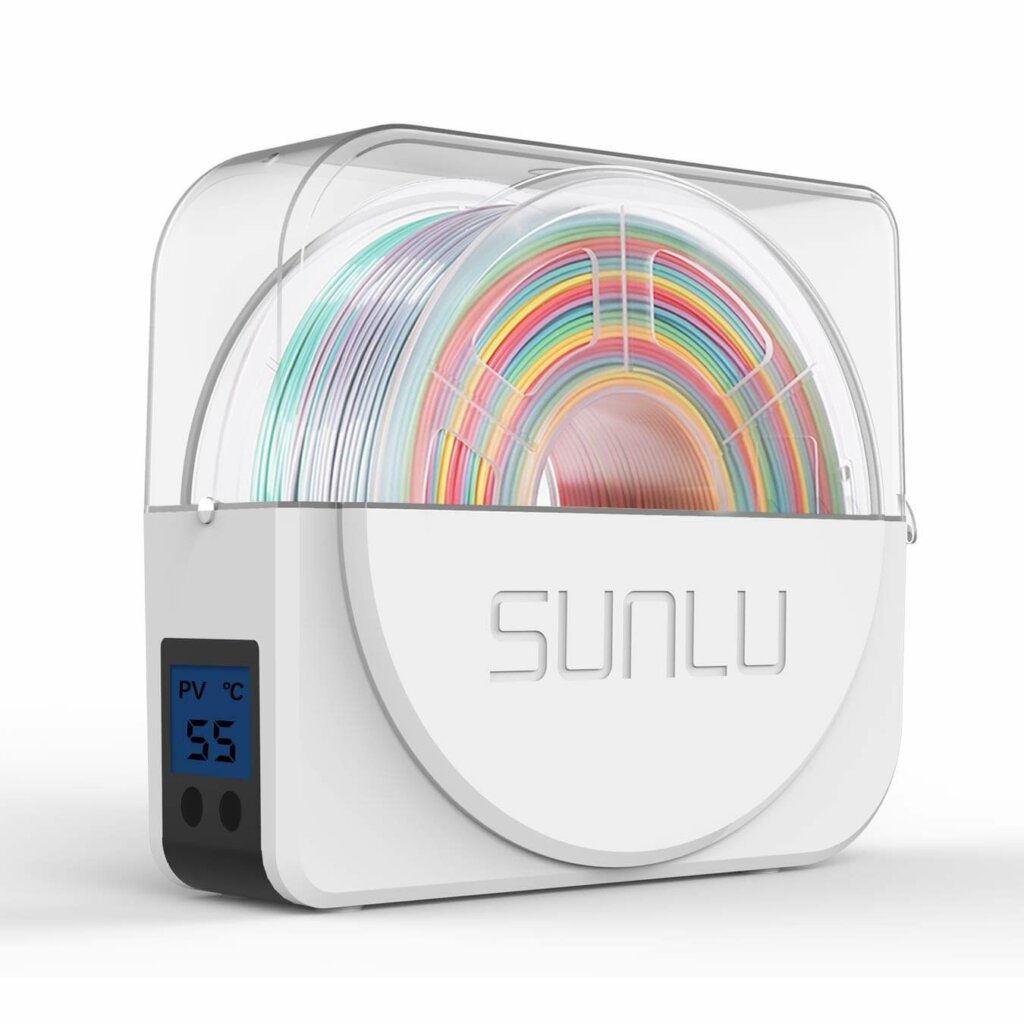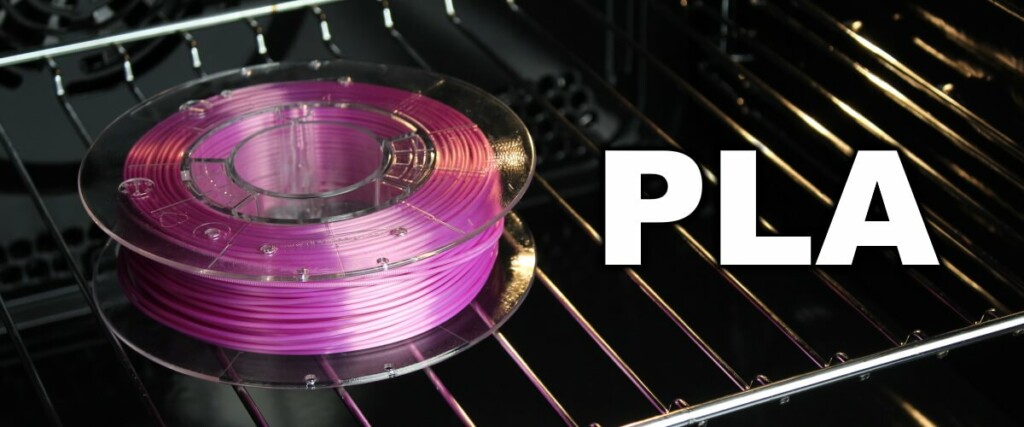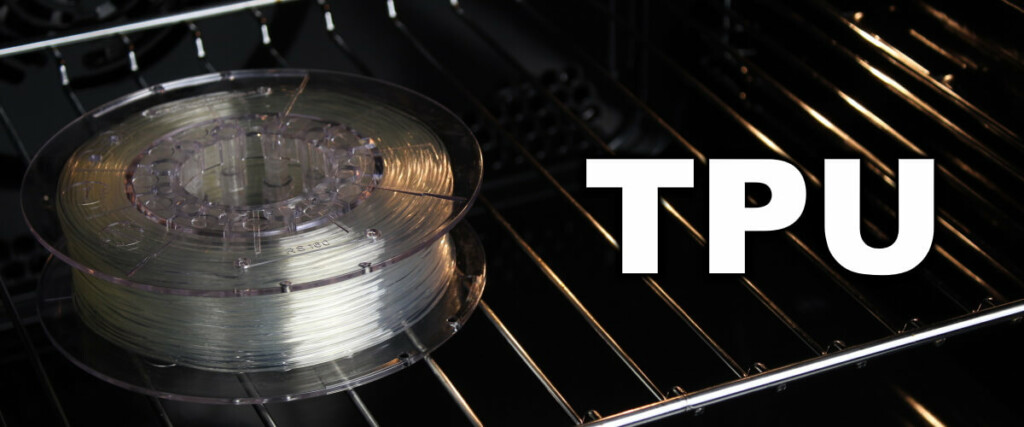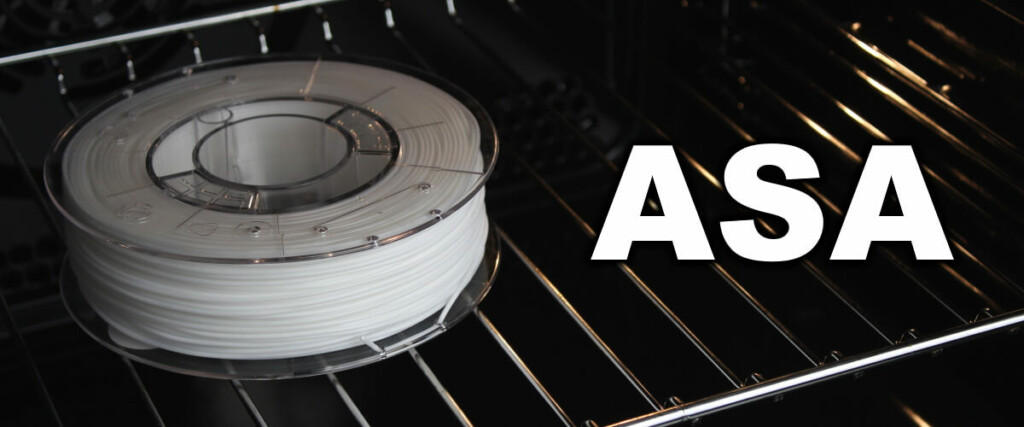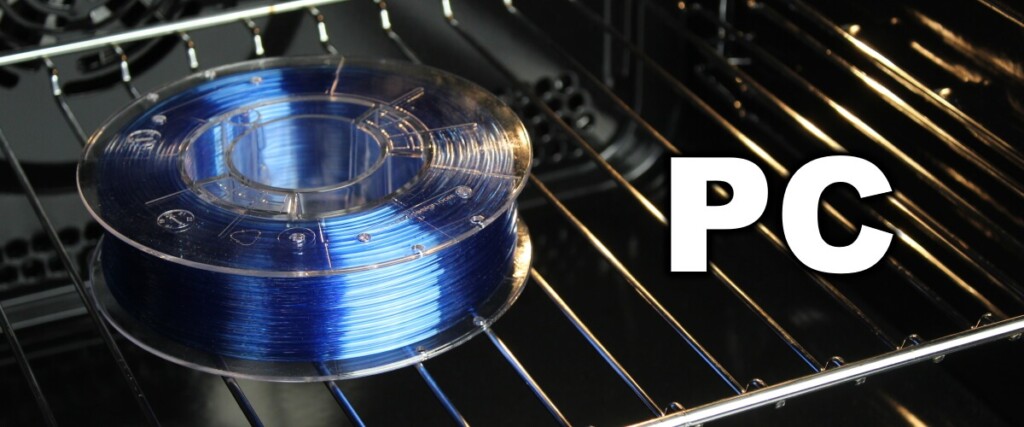How to Dry Your Filament

Drying your filament could be a great solution for improving your print quality. In this article you will learn how to dry your filament, and how to store it after drying.
To be honest, drying my filament was never on the list for me. I did not encounter any issues with it in the past, but this was probably because I used to finish my filament rolls quickly. Now that I have about 40 rolls of different filaments which are stored without proper care, I started to notice a degradation in print quality for older rolls.
After drying them, print quality was back where it was when I started a new roll, so I thought it would be a good idea to share my findings with you.
Why dry your filament?
The main reason to dry your filament is to have more consistent results during printing. Most of the filaments used in 3D printing are hygroscopic. This means that they absorb moisture from the air and loose some of their proprieties.
Some filaments (PETG,PC, ABS and Nylon) are more hygroscopic than others (PLA) and to get the best print quality, it’s recommended to dry them before starting a new print.
How to determine if your filament needs drying?
Filament popping during extrusion
I recommend you first heat up your nozzle to the correct temperature (according to the filament used) and extrude 100mm of filament. If during the extrusion process you can hear small pops, sizzling sounds or notice some steam being released near the nozzle, then your filament needs to be dried.
The water contained in the filament is quickly turned to vapor during extrusion and can cause issues during printing.
Stringing is more apparent
Most of the time, stringing is the first sign that your filament needs to be dried. I’ve read a lot of reports online where users had good quality prints with a specific filament brand, only to be plagued by stringing after a few months. I even had the same issues with an old roll of PETG which printed perfectly but was impossible to print after 6 months.
After drying the filament, your stringing issues should be much reduced or even eliminated (if retraction is correctly calibrated).
Inconsistent extrusion
Another way of detecting that your filament has absorbed some moisture is the inconsistent extrusion with incorrectly aligned layers.
Most of the time, when filament absorbs moisture, it does not absorb it uniformly and some parts of the filament have more moisture compared to others. When that water is released during extrusion, pressure inside the nozzle increases slightly and causes more plastic to be extruded for a brief moment. This causes your layer lines to be inconsistent and the finished prints will not look as good.
Besides that, the filament also has a tendency to swell when moisture gets absorbed, so instead of the regular 1.75 mm diameter your filament could be 1.8 mm on some regions leading to poor quality extrusion.
Filament is brittle and snaps easily
Filament snaps and brittleness often shows up for PLA because when it absorbs moisture, the filament looses some of it’s flexibility. I did not encounter brittleness with other types of filament but your results might vary.
After drying, the filament should regain some of its flexibility and it should be harder to snap.
Prerequisites for drying filament
To efficiently dry and remove moisture from your filament, you need a machine which insulates the filament while raising the temperature in a controlled way.
Oven
Using an oven is the easiest and most efficient way of drying filament. But this is only possible if you have an oven that allows accurate control of the temperature.
Before putting your filament inside the oven, it’s important to check if the oven thermostat is accurate. Grab a regular thermometer and put it inside the oven after its pre-heated to check the temperature inside. Make sure the temperature inside the oven is the same as the one you have set. Adjust accordingly if there are inconsistencies.
I use an infrared thermometer for this. I noticed that when I’ve set my oven to 50C, the temperature inside was around 45C so I needed to bump it out a bit to compensate.
Some ovens are not that accurate and when drying PLA, you can easily destroy your filament if the temperature inside the oven overshoots, even if this happens only for a few minutes.
Dehydrator
Another popular option for drying filament is getting a food dehydrator. There are a lot of guides online on how to convert a food dehydrator into a filament dryer.
The main drawback for using a food dehydrator is the capacity. You can dry only one or two spools of filament at once, depending on the size.
You should be able to find a cheap food dehydrator at your local goodwill or on eBay. Considering that you will use this only for drying filament, it doesn’t need to be a brand-new machine.
Filament Dryer
I am not a big fan of filament dryers because they are a bit expensive in my opinion, considering that you can only dry a single spool at a time. But it’s a good investment if you print often with Nylon or PETG because you can feed the filament to your printer directly from the filament dryer. That way, the filament stays dry until it reaches the nozzle and gets extruded.
Sunlu just launched their Drier Box S1 which has a range of 35C to 55C and an adjustable timer. It can work well for regular filaments like PLA, PETG, ABS and TPU but you need to dry the filament longer for good results.
There are other filament dryers available, like the eSUN 3D Filament Dryer Box.
Temperatures for Drying Filament
PLA
PLA (or polylactic acid) is the most popular filament used for 3D printing because it’s easy to print and doesn’t require special preparations for it.
My experience with PLA has been fairly good. I only encountered a few filament snaps with a roll of green PLA which has been left out for more than a year.
How to dry PLA?
I recommend drying your PLA at a temperature of 40C-50C for at least 4 hours if you are drying inside a ventilated oven.
PETG
PETG (or polyethylene terephthalate) is currently a popular alternative for ABS filament because it offers higher temperature resistance while being easier to print.
For me, PETG has been the filament which absorbed the most amount of moisture and more than a handful of prints have failed because of this.
Most of the time, stringing was terrible, and the layer lines looked bad, but after drying
How to dry PETG?
I recommend drying your PETG at a temperature of 60C-65C for at least 4 hours.
ABS
ABS (or acrylonitrile butadiene styrene) was the most popular filament used in the beginning of 3D printing. It is still used because it offers good temperature resistance, but it has a few drawbacks. It needs an enclosure to be printed reliably and good ventilation because of the smell.
My experience with ABS was relatively good and I did not find the need to dry my spools before printing.
How to dry ABS?
I recommend drying your ABS at a temperature of 80C-85C for at least 4 hours.
TPU
TPU (or thermoplastic polyurethane) is the most popular filament for RC enthusiasts because it can be used to print semi-flexible models.
Every time I leave my TPU roll out for a couple of months, I start to get a lot of stringing and inconsistent extrusion. After a few hours of drying, the difference in quality is huge.
How to dry TPU?
I recommend drying your TPU at a temperature of 40C-45C for at least 5 hours.
Nylon
Nylon is one of the most hygroscopic materials you can print. It’s recommended to dry your spool before each print because right after you take it out from the bag, the filament starts absorbing moisture.
For best results, I recommend you build a filament spool holder which insulates the filament during printing, or use a filament dryer.
How to dry Nylon?
I recommend drying your Nylon at a temperature of 80C-90C for at least 12 hours.
ASA
ASA (or Acrylonitrile styrene acrylate) is similar to ABS with better resistance to UV so this material is excellent for 3D printed parts which will be left outside. It has increased stress cracking resistance and, in my opinion,, it’s a bit easier to print with.
How to dry ASA?
For me, ASA did not behave differently compared to ABS. I never dried a spool of ASA before printing because there was no need. But your results my vary.
I recommend drying your ASA at a temperature of 80C-85C for at least 4 hours.
PC
PC (or Polycarbonate) is mostly use in engineering because parts printed in PC are strong and tough. Printing PC is hard without properly without previously drying the material. It’s just as hygroscopic as ABS, PETG or Nylon.
Polycarbonate is just as hygroscopic like nylon so it’s recommended to dry it before each print and keep it in an air-tight container when not in use.
How to dry PC?
I recommend drying your PC at a temperature of 120C-130C for at least 6 hours.
How to store dried filament?
After drying your filament, it’s important to store it in a dry place with low humidity. I store my rolls in enclosed cabinets with some silica gel bags inside. This works well for me because I don’t have a humid environment.
If you live in an area with higher humidity, then I recommend storing your rolls individually in sealable bags. This way you will keep your filament dry for a longer period, but you won’t be able to print without removing the roll from the bag.
If space is not an issue, then buying an air-tight plastic container and modding it into an insulated filament holder should be the best way for avoiding moisture inside your filament.
It takes a bit of work but in the end, this solution will eliminate the need of constantly drying your filament.
Wrapping up
Hoefully, now you have a better understanding about how you need to dry your filament for best print quality.
If you still have issues when printing, you probably need to do some calibration. Check out the 3D Printer Calibration Guide using IdeaMaker article which takes you through the entire process.
You can also join the 3DPrintBeginner Forum where there’s a dedicated thread for 3D printing filament discussions.
Liked it?
|
|

